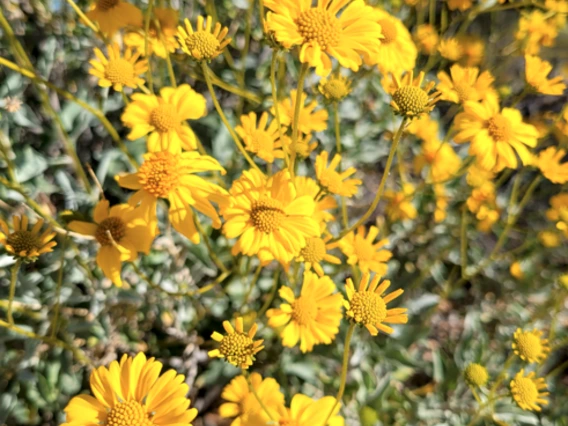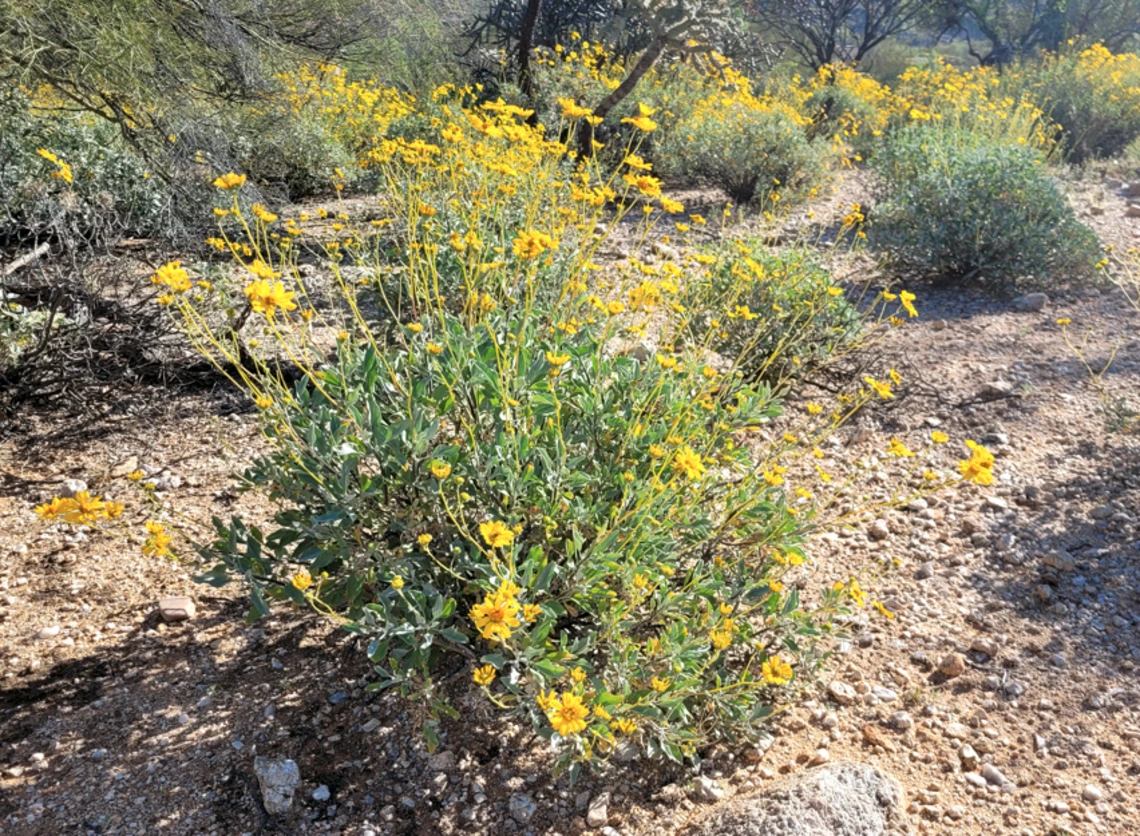Family: Asteraceae
Compound: Enc far
Synonyms: Synonyms: Encelia farinosa var. farinosa, Encelia farinosa var. phenicodonta, Encelia farinosa var. radicans
Geographic Origin: southwestern US, northwestern Mexico
Characteristics: A small shrub typically between 0.6-1m (2-3ft) in height and equally wide, though flowers extend beyond the rest of the plant on long peduncles giving an extra foot or so of height. Flowers have vibrant yellow petals with either a yellow, or dark brown to black center. They appear in fall and last until early summer the following year. This is an evergreen shrub, but it can drop its leaves during periods of drought leaving just its brittle stems. These develop a smooth bark with age and become woody near the base. Leaves are alternate, simple, ovate, about 2-7cm (0.75-2.75in) in length, and heavily tomestose giving them a gray-green to blue-gray appearance. Though it is a long-lived perennial, seedlings may flower, produce seeds, and die the same year they germinate if conditions are not favorable.
Natural History: Common under 915m (3,000ft) in elevation on bajadas and rocky slopes.
Cultivation Notes: Easily grown from seed, which can be collected in late spring to early summer. This is a fast-growing plant that reseeds easily. Perfect for low water gardens and landscaping due to its hardiness in dry environments, tolerance of full sun and beautiful coloration. May require some maintenance in the form of weeding if you don’t want more, especially in an area that gets regular water. To prevent the plant from dropping leaves and appearing dead during the dry season, extra water may be needed.
For general plant propagation information, click here
Ethnobotany: Can be used as pain relief, notably for toothaches. The plant excretes a resinous material that can be chewed like gum. It was also historically used in arrow construction, as a waterproofing material, or varnish when melted and applied to surfaces.
Citations:
Walters, James E, and Balbir Backhaus. Shade and Color with Water-Conserving Plants. Timber Press, 1992.
Arizona Sonora Desert Museum. Retrieved June 7, 2024.
SEINet Arizona – New Mexico Chapter. Retrieved June 7, 2024.
USDA. Retrieved June 7, 2024.







